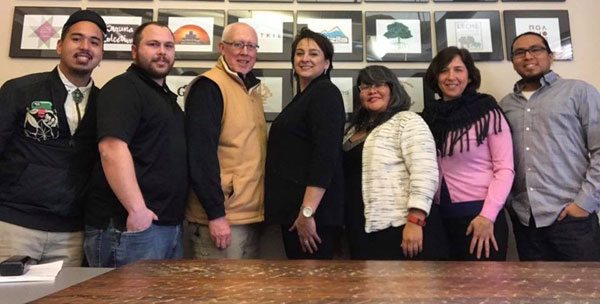|
November 15, 2017; Albuquerque Business First
Last week, New Mexico Community Capital (NMCC) announced that a $1.2 million grant from the W.K. Kellogg Foundation will allow it to expand workforce training for New Mexico’s Native American population, which has the highest poverty rate in the state, at 34.6 percent.
The grant program is an expansion on NMCC’s Native Entrepreneur in Residence (NEIR) program, which started in 2014. Peter Holter, managing director of entrepreneurial services with NMCC, said that “24 graduates from that program have created 84 new jobs and $7.36 million in new gross revenues.” However, he added, “Many struggle to prepare competitive business plans and funding applications. They lack access to consistent business expertise, free support services, and peer networks.” The added funding will help NMCC address that problem.
NEIR began because, as the Kauffman Foundation pointed out, Native entrepreneurs rarely have access to the same kinds of capital and investment that others do. Emily Fetsch at Kauffman explained that “Because Native Americans, especially those residing on reservations, tend to be geographically isolated, they are unlikely to have connections to potential equity investors.” A 2010 study from the Minority Business Development Agency at the US Chamber of Commerce reported,
Minority-owned businesses [sic] are found to pay higher interest rates on loans. They are also more likely to be denied credit, and are less likely to apply for loans because they fear their applications will be denied. Further, minority-owned firms are found to have less than half the average amount of recent equity investments and loans than non-minority firms even among firms with $500,000 or more in annual gross receipts, and also invest substantially less capital at startup and in the first few years of existence than non-minority firms.
Because reservation land is often held “in trust” for American Indian nations by the federal government, American Indians don’t technically hold title to trust lands. This keeps the land from being sold to outside investors, but makes it difficult to finance business development, as land that cannot be sold also cannot be used as collateral for loans. As Naomi Schaefer Riley of the Atlantic explained,
The goal of this policy was originally to keep Indians contained to certain lands. Now, it has shifted to preserving these lands for indigenous peoples. But the effect is the same… This prevents American Indians from reaping numerous benefits.
[…]Indians have long suffered from what the Nobel Prize–winning economist Hernando de Soto has called “dead capital.” They may possess a certain amount of land on paper, but they can’t put it to use by selling it, buying more to take advantage of economies of scale, or borrowing against it.
Based on research of similar past endeavors, the Kellogg grant is likely to be an excellent philanthropic investment. The same report from the MBDA noted, “Between 1997 and 2002, minority-owned [sic] firms far outpaced non-minority firms in terms of growth in number of businesses total gross receipts, number of employees, and total annual payroll.” A 2014 study in the Research in Business and Economics Journal found that “small businesses owned by Native Americans to employ somewhat more employees than businesses owned by small business owners representing other racial classifications,” meaning that a successful small business can lift multiple families out of poverty.
In October, NPQ reported on a program run by the Orton Family Foundation that found success by reaching out to communities where they were living, determining what assets already existed, and building engagement off that knowledge. It seems that NMCC is poised to work the same way, identifying needs they can fill and training people to build independent wealth. As President Trump’s administration threatens to cut programs that support Native populations, we are glad to see some nonprofits stepping into the void.—Erin Rubin


